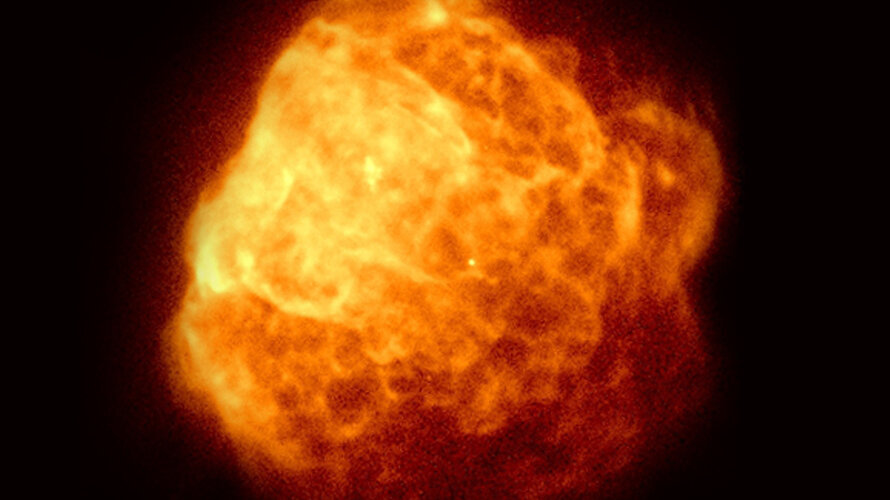On 9 January 2024, the Einstein probe was launched, its mission to study the night sky in X-rays. The first image from the probe that explores the Universe in these energetic wavelengths has just been released. It shows Puppis A, the supernova remnant from a massive star that exploded 4,000 years ago. The image showed the expanding cloud of ejecta from the explosion but now, Einstein will continue to scan the skies for other X-ray events.
Continue reading “First Light from Einstein Probe: A Supernova Remnant”C/2014 Q2 Lovejoy – A Binocular Comet in Time for Christmas
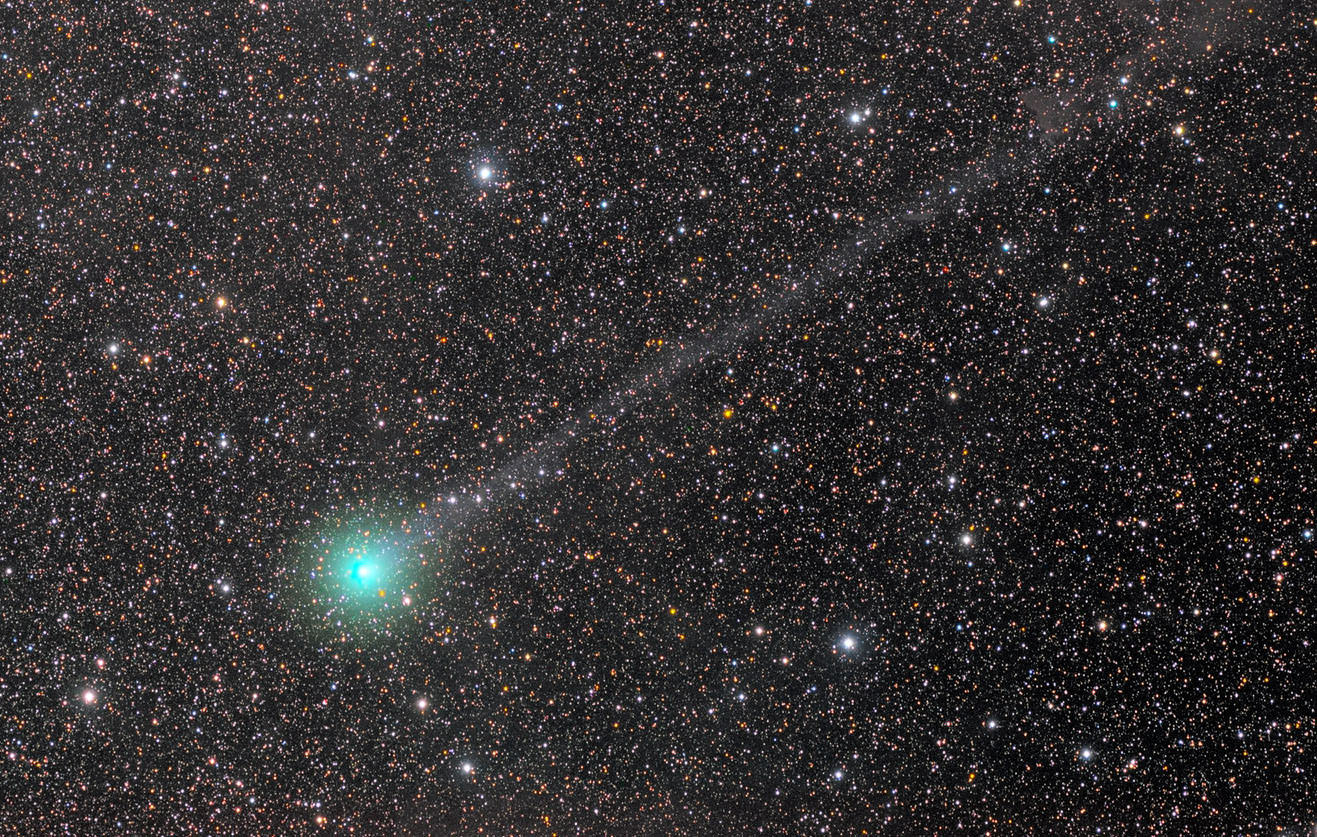
Hmmm. Something with a long white beard is making an appearance in northern skies this week. Could it be Santa Claus? No, a bit early for the jolly guy yet, but comet watchers will soon find a special present under the tree this season. Get ready to unwrap Comet Lovejoy Q2, now bright enough to spot in a pair of 10×50 binoculars.
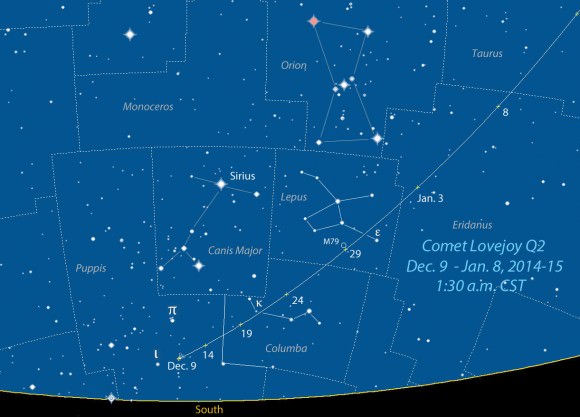
Following a rocket-like trajectory into the northern sky, this visitor from deep space is no longer reserved for southern skywatchers alone. If you live in the central U.S., Lovejoy Q2 pokes its head from Puppis in the early morning hours this week. Glowing at magnitude +7.0-7.5, it’s a faint, fuzzy cotton ball in binoculars from a dark sky and visible in telescopes as small as 3-inches (7.5 cm). With the Moon past full and phasing out of the picture, comet viewing will continue to improve in the coming nights. What fun to watch Lovejoy gradually accelerate from its present turtle-like amble to agile cheetah as it leaps from Lepus to Taurus at the rate of 3° a day later this month. Why the hurry? The comet is approaching Earth and will pass nearest our planet on January 7th at a distance of 43.6 million miles (70.2 million km). Perihelion follows some three weeks later on January 30th.

The new object is Australian amateur Terry Lovejoy’s 5th comet discovery. He captured images of the faint, 15th magnitude wisp on August 17th with a Celestron C-8 fitted with a CCD camera at his roll-off roof observatory in Brisbane, Australia. Comet Lovejoy Q2 has a period of about 11,500 years with an orbit steeply inclined to the plane of the Solar System (80.3°), the reason for its sharp northern climb. As December gives way to January the comet crosses from below to above the plane of the planets.
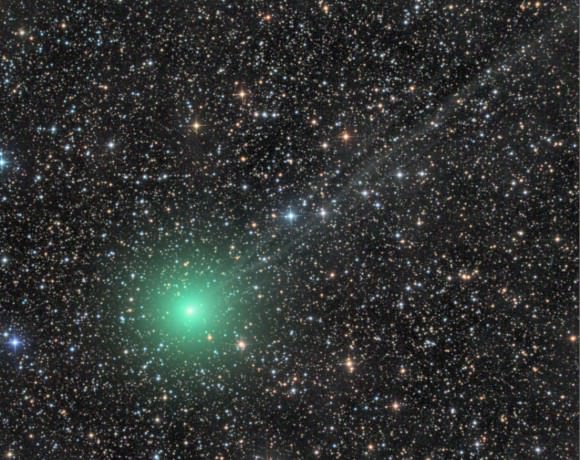
Comet Lovejoy is expected to brighten to perhaps 5th magnitude as it approaches Earth, making it faintly visible with the naked eye from a dark sky site. Now that’s what I call a great way to start the new year!
To help you find it, use the top map to get oriented; the detailed charts (below) show stars to magnitude +8.0. Click each to enlarge and then print out a copy for use at night. Bonus! Comet Lovejoy will pass only 10 arc minutes (1/3°) south of the 8th magnitude globular cluster M79 on December 28-29 – a great opportunity for astrophotographers and observers alike. Both comet and cluster will pose side by side in the same binocular and telescopic field of view. In early January I’ll post fresh maps to help you track the comet all through next month, too.
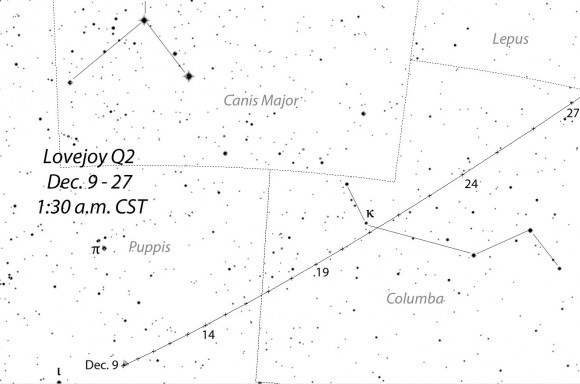
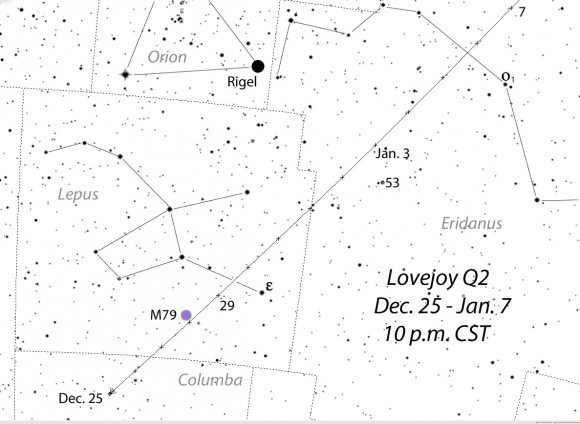
Australian Amateur Terry Lovejoy Discovers New Comet
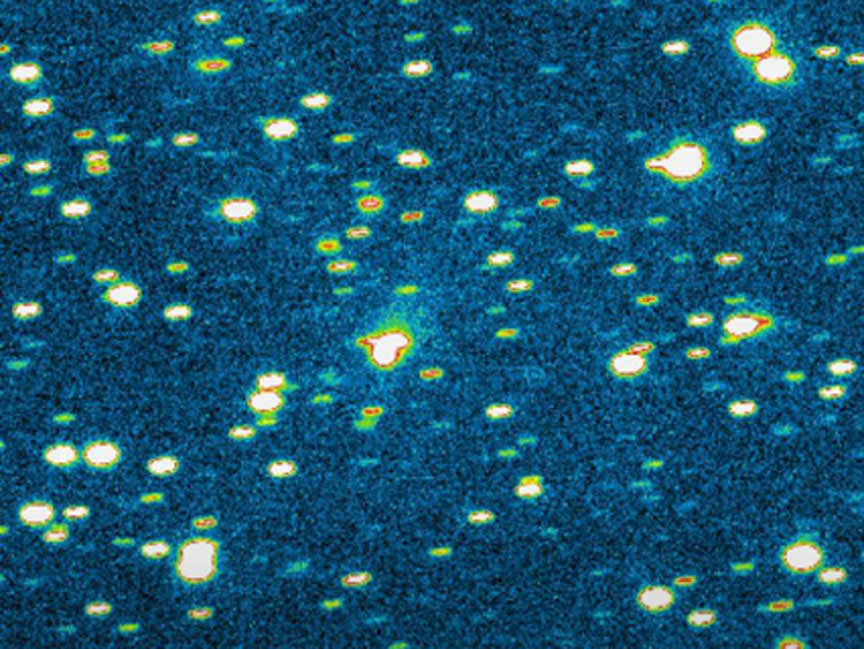
It’s confirmed! Australian amateur astronomer Terry Lovejoy just discovered his fifth comet, C/2014 Q2 (Lovejoy). He found it August 17th using a Celestron C8 fitted with a CCD camera at his roll-off roof observatory in Brisbane, Australia.

“I take large sets of image triplets, i.e 3 images per star field and use software to find moving objects,” said Lovejoy. “The software I use outputs suspects that I check manually by eye.”
Most of what pops up on the camera are asteroids, known comets, or false alarms but not this time. Lovejoy’s latest find is a faint, fuzzy object in the constellation Puppis in the morning sky.
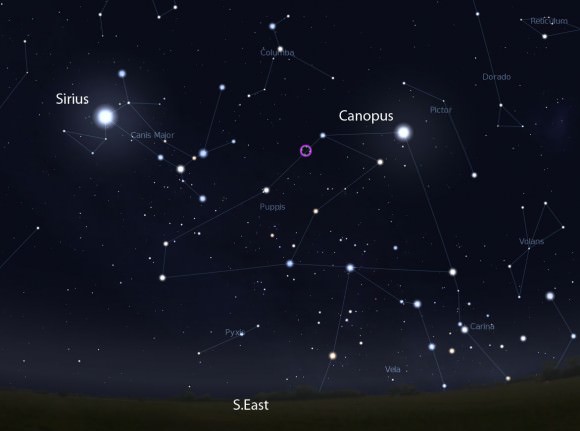
Glowing a dim magnitude +15, the new comet will be a southern sky object until later this fall when it swings quickly northward soon around the time of perihelion or closest approach to the sun. Lovejoy’s find needs more observations to better refine its orbit, but based on preliminary data, Maik Meyer, founder of the Comets Mailing List, calculates a January 2, 2015 perihelion.
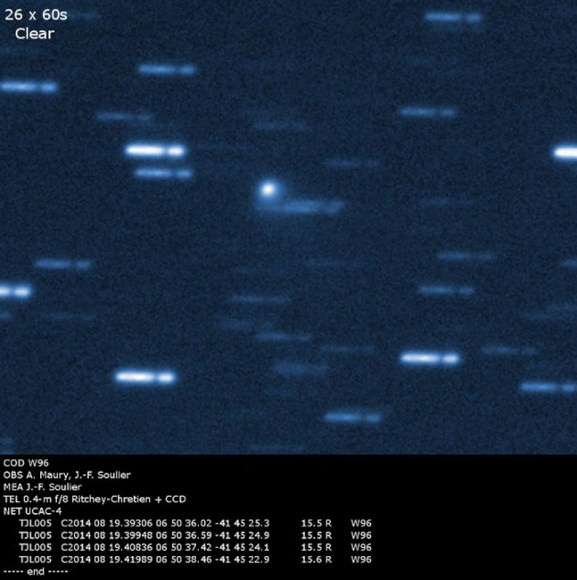
On that date, it will be a healthy 84 million miles from the sun, but one month earlier on December 7, the comet could pass just 6.5 million miles from Earth and be well placed for viewing in amateur telescopes.
Everything’s still a little up in the air right now, so these times and distances are likely to change as fresh observations pour in. Take all predictions with a major grain of salt for the moment.
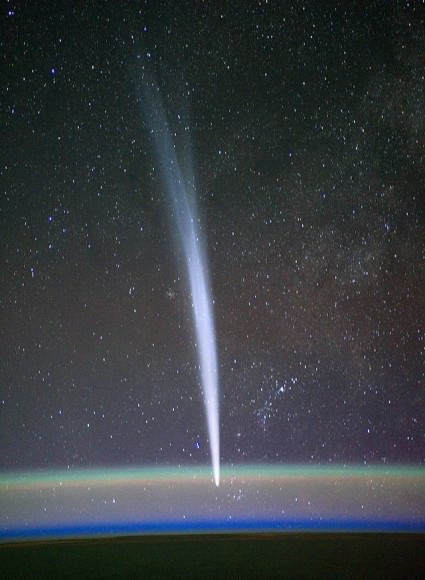
You might remember some of Terry’s earlier comets. Comet Lovejoy (C/2011 W3), a Kreutz sungrazer discovered in November 2011, passed just 87,000 miles above the sun’s surface. Many astronomers thought it wouldn’t survive the sun’s heat, yet amazingly, although much of its nucleus burned off, enough material survived to produce a spectacular tail.
More recently, Comet Lovejoy (C/2013 R1) thrilled observers as it climbed to naked eye brightness last November, managing to do the impossible at the time and draw our eyes away from Comet ISON.
Congratulations Terry on your new find! May it wax brightly this fall.
* Update: The latest orbit calculation from the Minor Planet Center based on 24 observations now puts perihelion at 164.6 million miles (265 million km) on February 14, 2015. Closest approach to Earth of 93.2 million miles (150 million km) will occur in January.

